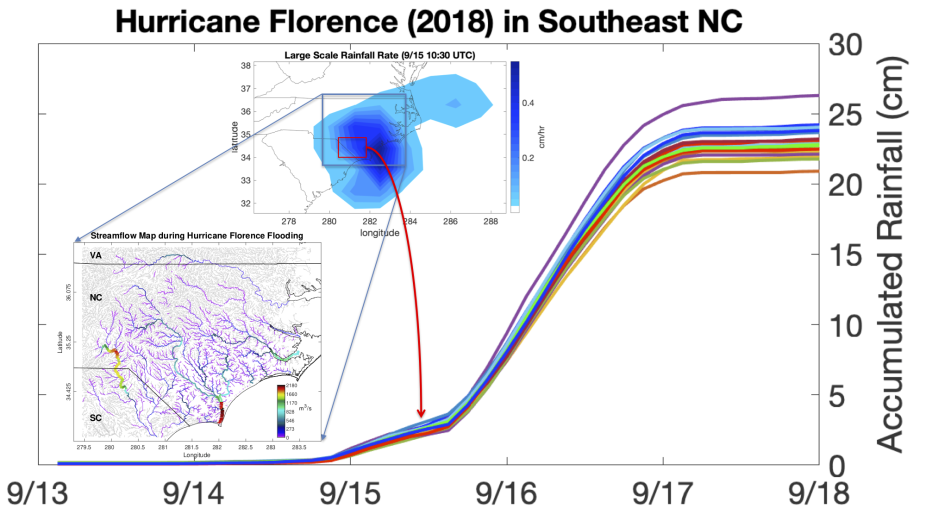NCAR Releases new, realistic atmosphere reanalysis
When Hurricane Florence hit the Carolinas in 2018, it caused catastrophic damage and claimed 42 lives, underscoring the powerful influence the atmosphere can have over land. To better understand phenomena like hurricanes and improve the reliability of forecasts, a team of scientists at NCAR has released a reanalysis that combines an ensemble of 80 different hindcasts (forecasts made for a time in the past) with real-world observations.
“We realize that having one answer to what the weather was on a given day is not all the information we need,” said Kevin Raeder, a scientist and member of NCAR’s Data Assimilation Research Section (DAReS) team. “We also need to have some kind of estimate as to how reliable that information is. If you run a bunch of hindcasts as an ensemble, it gives you a very good idea of what you should expect, which is very useful, but it also says you should have this much confidence in that estimate.”

A graph of the accumulated total rain depth generated by CAM6 in the grid box (red) during five days in September 2018 for 20 of the 80 ensemble members. The ensemble of rainfall provides appropriate variability in the forcing of the surface model, which in this case is a stream flow model (WRF-Hydro). The inset stream flow map shows the resulting modeled stream flows, which led to flooding. The inset rainfall rate (blue) shows the distribution of non-convective rain at 10:30 UTC on September 15.
Graph produced by Kevin Raeder, NCAR
To create the reanalysis, the DAReS team ran all 80 hindcasts on Cheyenne using NCAR’s Community Atmosphere Model version 6 (CAM6), which is a component of the Community Earth System Model (CESM). The team then used NCAR’s Data Assimilation Research Testbed to combine the model hindcasts with real-world observations and adjust the model variables to align more closely with the actual observations. The adjusted variables were then reintegrated back into CAM6 and the cycle of running hindcasts, adding observations, and making adjustments was repeated again and again for every observation and every model variable.
The resulting reanalysis provides snapshots of the atmosphere four times a day from 2011 through 2019, and a detailed picture of atmospheric behavior ranging from daily weather cycles to regional fronts and storms to multiyear, global patterns like El Niño.
Because the reanalysis is based on Bayesian statistics, Raeder said, it has a good mathematical foundation which gives the team high confidence in the output. “A bonus of the reanalysis ensemble,” he added, “is that it gives us measures of the variability we should expect in the outcomes and of the confidence we can have in the final answers.”
The reanalysis data are available to all registered users from NCAR’s Research Data Archive. “Probably the most unique and useful data created by this project,” Raeder said, “is the realistic, numerical, atmospheric forcing of the surface components of CESM. Having an ensemble of this forcing from the atmosphere is invaluable for investigating both the quality of the surface models and the real phenomena that they describe.”